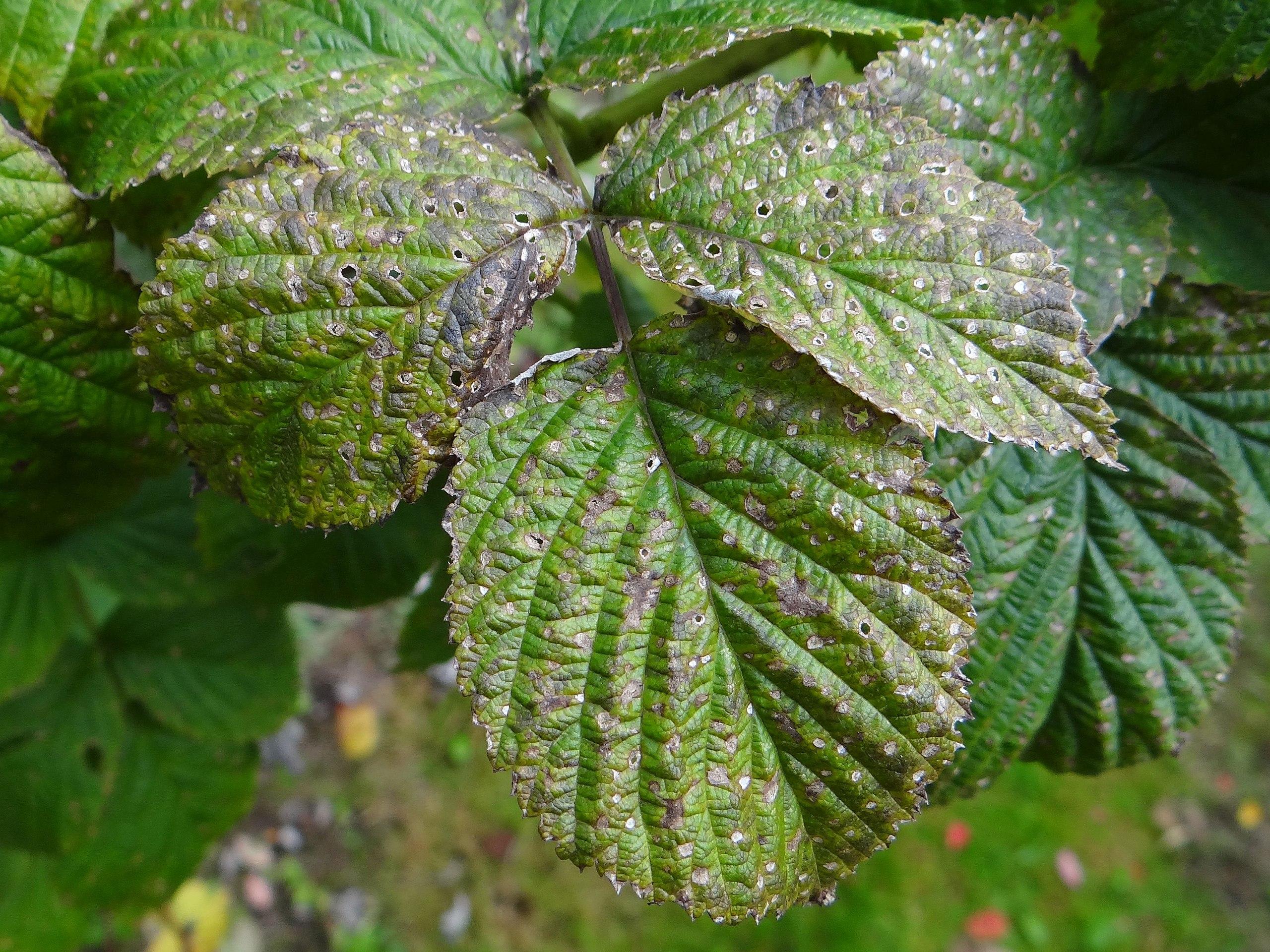
Leaf spot
Mycosphaerella rubi
What is Leaf spot (Mycosphaerella rubi)?
Leaf spot caused by Mycosphaerella rubi is a fungal disease that affects various berry plants, including blackberries, raspberries, and related cultivars. It is characterized by the formation of circular, reddish-purple spots on the leaves, which can later become irregular or angular. The centers of the spots may turn white to gray, while the margins often retain a purple color.
How does Leaf spot (Mycosphaerella rubi) occur?
Leaf spot pathogens survive winter in infected leaf debris and can infect buds and young twigs. Disease spread occurs during the growing season through wind and splashing rain, disseminating spores to susceptible plant tissue. Infection requires prolonged moisture or high humidity (12 to 24 hours). Leaf spots mature within one to two weeks, releasing spores that can initiate new infections.
Symptoms
1 - Effects on Plants
Plants experience reduced photosynthesis, energy production, defoliation, stunted growth, and decreased yield. These impacts result in weakened productivity and economic losses for farmers.
2 - Effects on Soil
• Accelerated decomposition of infected leaves contributes to nutrient cycling. • Decomposing infected leaves add organic matter to the soil, potentially enriching nutrient content. • Infected leaf debris acts as a reservoir for pathogens, increasing the risk of recurring infections.
3 - Effects on the Environment
Wind and water facilitate spore dispersal, leading to the spread of the disease. Severe infections may impact plant diversity, favoring more resistant species.
Solutions
1 - Cultural Control
• Rake and dispose of fallen leaves before the first snowfall to eliminate disease sources for the next season. • Trim trees and shrubs to improve light penetration and enhance air circulation within the canopy. • Water trees at the base, avoiding leaf splashing, and use drip or soaker hoses instead of sprinklers. • Keep the top 6-8 inches of soil moist, allowing it to dry before the next watering. • Apply a 3–4-inch layer of mulch around the tree, avoiding trunk contact. • Annually replenish mulch, ensuring a flat layer with a 2-inch gap between the mulch and stem. • Refrain from fertilizing trees with leaf spot diseases unless a soil test indicates nutrient deficiencies.
2 - Chemical Control
• Apply fungicide sprays at different growth stages of the young primocanes like Abound, Bonide Captan 50 WP, Cabrio EG, Captan 80 WDG, fixed coppers (Nu-Cop, C-O-C-S, Nordox, Cuprofix, Kocide) Luna Tranquility, Pristine, and propiconazole-based fungicides. • Follow the specific instructions regarding each product's reentry periods and harvest restrictions. • It's essential to consult professionals for complete and accurate disease prevention and chemical control guidelines.
